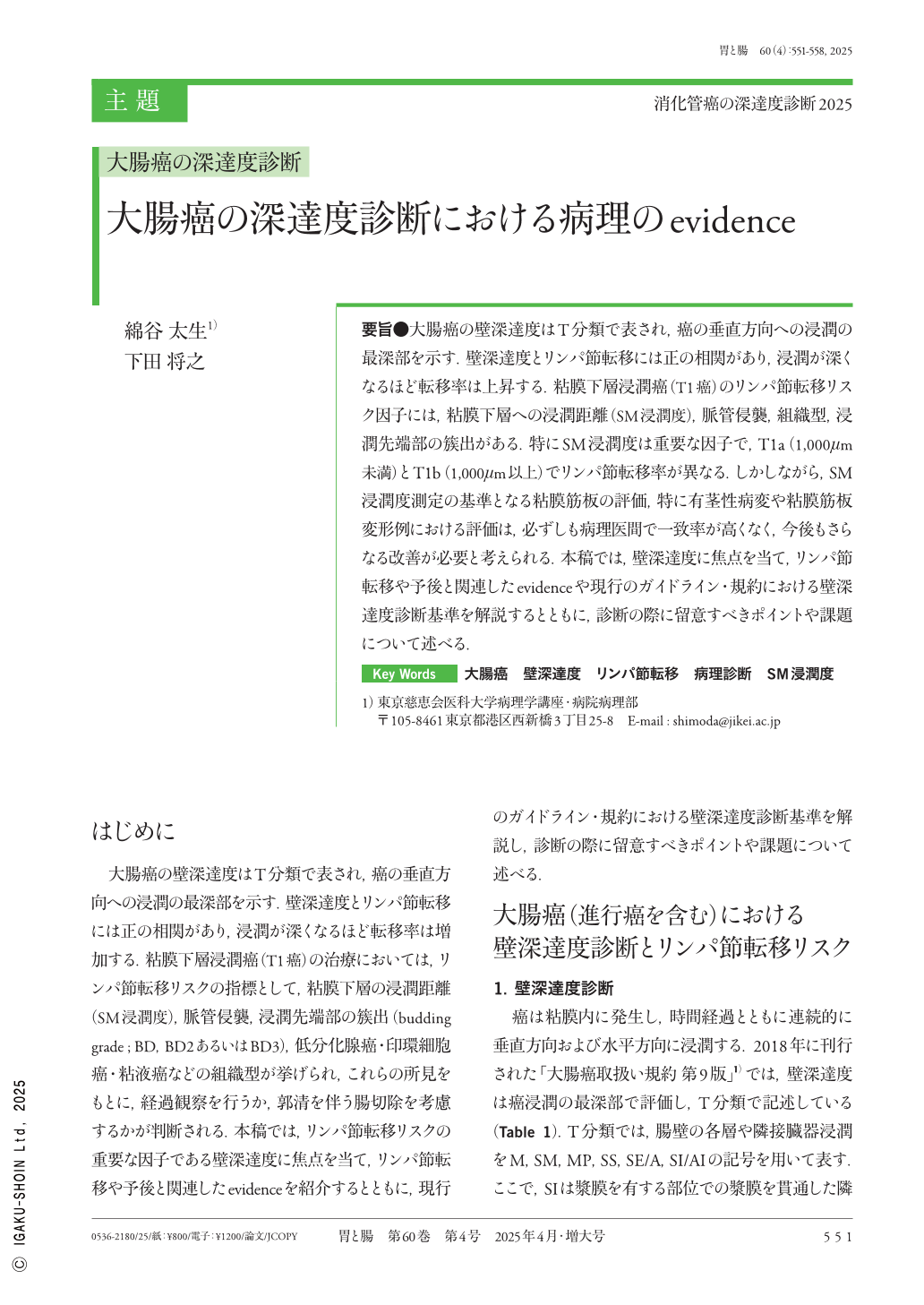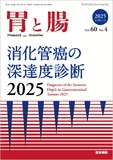Japanese
English
- 有料閲覧
- Abstract 文献概要
- 1ページ目 Look Inside
- 参考文献 Reference
要旨●大腸癌の壁深達度はT分類で表され,癌の垂直方向への浸潤の最深部を示す.壁深達度とリンパ節転移には正の相関があり,浸潤が深くなるほど転移率は上昇する.粘膜下層浸潤癌(T1癌)のリンパ節転移リスク因子には,粘膜下層への浸潤距離(SM浸潤度),脈管侵襲,組織型,浸潤先端部の簇出がある.特にSM浸潤度は重要な因子で,T1a(1,000μm未満)とT1b(1,000μm以上)でリンパ節転移率が異なる.しかしながら,SM浸潤度測定の基準となる粘膜筋板の評価,特に有茎性病変や粘膜筋板変形例における評価は,必ずしも病理医間で一致率が高くなく,今後もさらなる改善が必要と考えられる.本稿では,壁深達度に焦点を当て,リンパ節転移や予後と関連したevidenceや現行のガイドライン・規約における壁深達度診断基準を解説するとともに,診断の際に留意すべきポイントや課題について述べる.
The depth of tumor invasion in colorectal cancer refers to the deepest point of vertical tumor infiltration and is classified according to the T category. Previous studies have demonstrated a positive correlation between invasion depth and lymph node metastasis. In T1 colorectal cancer, key risk factors for lymph node metastasis include submucosal invasion depth(SM invasion depth), lymphatic or vascular invasion, histological type, and tumor budding at the invasive front. Among these, SM invasion depth is particularly significant, as studies have shown that lymph node metastasis is reported markedly more frequent in T1b cancer(SM invasion depth:1,000μm or more)than in T1a cancer(SM invasion depth:less than 1,000μm). However, interobserver variability among pathologists in the assessing SM invasion depth remains a challenge, highlighting the need for further standardization. This section explores the relationship between invasion depth and lymph node metastasis, while addressing current guidelines and issues in pathological evaluation.

Copyright © 2025, Igaku-Shoin Ltd. All rights reserved.


